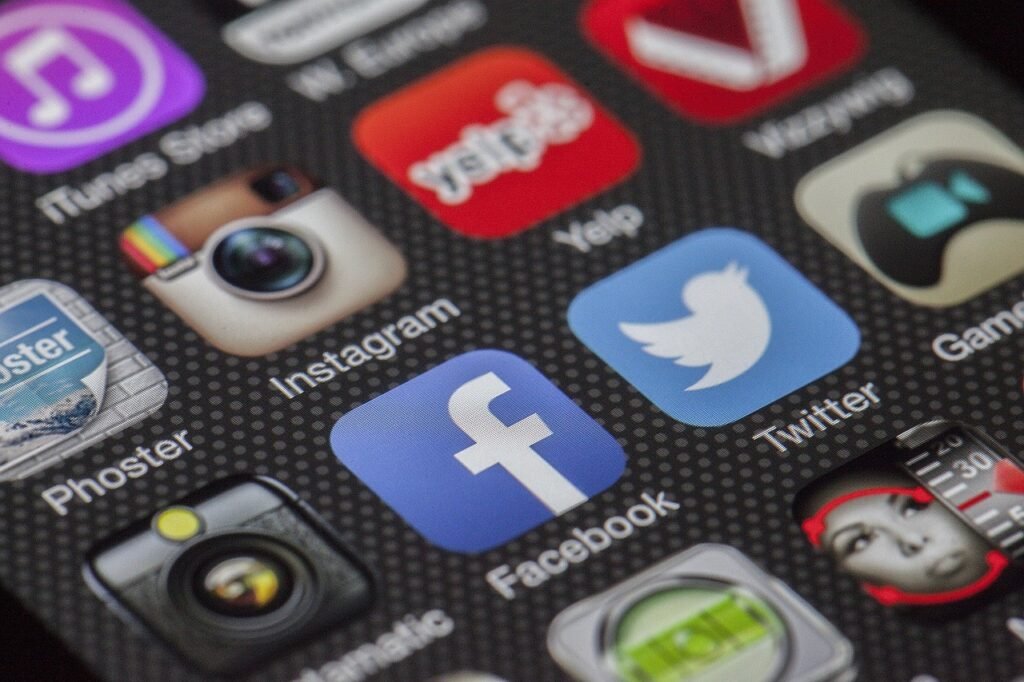This Article has been revised, edited and added to, by Poulomi Chakraborty.
- The Delicate Balance: Empathy vs. Opportunity
- Effective Crisis Communication Strategies in Digital Marketing
- Harnessing Digital Tools and Techniques for Crisis Management
- Building Resilience: Long-term Crisis Management Strategies for Digital Marketing
- Leveraging Technology for Enhanced Long-Term Crisis Management in Digital Marketing
- Implementing Advanced Technologies for Crisis-Resilient Digital Marketing
- Conclusion
In times of crisis, the digital world becomes a battleground not just for news but also for the hearts and minds of people. Marketing during such times requires not just tact but also a heightened sense of empathy and responsibility. How do brands navigate these turbulent waters without coming off as insensitive or opportunistic? This article delves deep into the strategies that can help businesses maintain their presence and integrity, all while contributing positively to a conversation that matters.
The Delicate Balance: Empathy vs. Opportunity

When a crisis strikes—be it a natural disaster, a social movement, or a global pandemic—the first instinct for many businesses might be to go silent. However, silence can often be misconstrued as indifference. On the other hand, overly promotional content can seem exploitative. Finding the middle ground is key, and that involves understanding both the context of the crisis and the needs and sentiments of the audience.
Understanding the Context
Every crisis has a backstory, a present impact, and a trajectory. A sound digital marketing strategy begins with thorough research. What is the nature of the crisis? Who is affected most? What are the immediate needs of those impacted? For instance, during a pandemic, the primary focus might be on health and safety, while in the aftermath of a natural disaster, the immediate needs might include shelter, food, and emergency services.
Responding with Empathy
Once the context is clear, the next step is crafting messages that resonate empathy. This does not mean shying away from branding altogether but rather aligning the brand’s message with the needs and emotions of the moment. For example, a company that produces outdoor gear might switch its messaging from adventurous exploits to the importance of safety and preparedness in outdoor settings.
Seizing Opportunity Without Opportunism
The line between seizing opportunity and appearing opportunistic can be thin. A brand that offers relevant services or products can position them as solutions without capitalizing on the crisis itself. This requires subtle messaging that highlights utility over profit. For instance, a telecommunications company during a crisis can emphasize how staying connected is vital, offering special packages to ensure uninterrupted service for its users.
The approach to marketing in a crisis can significantly affect a brand’s image. Let’s explore a detailed comparison of two fictional companies—Company A and Company B—both of which operate in the same industry but handle their digital marketing efforts during a crisis differently.
Company A: The Empathetic Engager
Company A has a robust crisis management plan that includes a detailed digital marketing strategy tailored to different types of crises. As soon as a crisis emerges, Company A pauses all pre-scheduled content. It then assesses the situation and starts communicating with its audience through its digital channels.
The messaging from Company A is consistently empathetic. It acknowledges the crisis, offers support, and provides useful information that can help its customers and the public. For instance, during a health crisis, Company A might share content about maintaining physical and mental health, even if it is a fitness brand.
Company B: The Silent Spectator
On the other hand, Company B takes a more conservative approach. It chooses to remain silent during the initial stages of the crisis, watching how the situation unfolds without engaging its audience. Company B fears that any communication might be perceived as insensitive or opportunistic, so it waits longer to assess its strategy.
The silence from Company B, however, begins to attract negative attention. Customers and the public feel ignored or neglected, and the lack of engagement is viewed as a lack of concern for the community.
This comparison illustrates the potential pitfalls and advantages of different approaches in digital marketing during a crisis. While Company A actively engages and supports its community, Company B’s silence could potentially harm its reputation and disconnect it from its customers.
Effective Crisis Communication Strategies in Digital Marketing

In navigating the choppy waters of crisis communication, marketers must be both proactive and reactive, always ready to adjust their strategy to suit the unfolding situation. The key is to communicate effectively, ensuring that your brand remains sensitive to the crisis while still engaging with your audience in meaningful ways.
Proactive Communication: The Anticipation Game
The essence of proactive communication lies in anticipating the needs and questions of your audience before they are even expressed. This involves monitoring the situation closely and predicting possible changes in public sentiment or needs.
Example: Utility Company in a Natural Disaster
Imagine a utility company during a hurricane. By anticipating power outages and safety concerns, the company can prepare content that addresses these issues head-on. This might include updates about areas likely to be affected by power losses, tips for preserving food during an outage, and guidelines for safely using generators. Such proactive measures not only provide value to customers but also position the brand as a helpful and caring entity.
Reactive Communication: Listening and Responding
While being proactive is crucial, it’s equally important to listen to the audience and respond to their specific concerns as they arise. This reactive approach ensures that the company remains relevant and sensitive to new developments.
Example: Fashion Retailer During a Social Movement
Consider a fashion retailer during a significant social movement. As public focus shifts to themes of justice and equality, the retailer must listen to the conversation and align its messages accordingly. This could involve highlighting diversity initiatives within the company or supporting causes that align with the movement’s goals. By reacting to the evolving discussion, the retailer maintains its relevance and demonstrates solidarity with its audience.
Integrating Technology: Tools for Timely Response
Technology plays a crucial role in managing digital marketing during a crisis. Tools that monitor social media sentiment and analyze trends can be invaluable for both proactive and reactive communication strategies.
Example: Social Media Monitoring for Crisis Management
A company can use social media monitoring tools to track mentions of its brand and relevant keywords associated with the crisis. This real-time data allows the company to quickly gauge public sentiment and tailor its communications accordingly. For instance, if there’s a surge in concerns about an issue related to the company’s products, immediate steps can be taken to address those concerns through informative and supportive content.
Ethical Considerations: Navigating Moral Boundaries
In crisis situations, the ethical implications of every marketing decision are magnified. It’s crucial to navigate these decisions with a strong moral compass, ensuring that your brand’s actions contribute positively to the situation rather than exacerbating any issues.
Example: Food Manufacturer During a Health Crisis
A food manufacturing company, during a health crisis involving dietary concerns, might be tempted to aggressively market its products as healthy alternatives. However, it’s important that such promotions are backed by factual information and delivered in a tone that respects the severity of the crisis. Misleading marketing, or appearing to exploit the crisis for commercial gain, can damage trust and brand reputation.
These strategies and examples illustrate that effective crisis management in digital marketing is not just about maintaining sales or visibility—it’s about building and sustaining trust with your audience. It’s about demonstrating that your brand stands with its community during tough times, providing support and valuable information when it’s most needed.
Harnessing Digital Tools and Techniques for Crisis Management

Effective crisis management in digital marketing isn’t just about choosing the right words; it’s also about leveraging the right tools and techniques to ensure those words reach the right people at the right time. Here, we’ll explore specific digital tools and techniques that can significantly enhance your marketing strategies during crisis situations.
Utilizing Social Listening Tools
Social listening tools are invaluable during a crisis because they allow brands to monitor and analyze conversations across social media and other digital platforms in real-time. These tools help you understand public sentiment, identify emerging trends, and respond appropriately.
Example: Responding to a Product Recall
In the event of a product recall, a brand can use social listening tools to quickly capture customer feedback, concerns, and questions across various platforms. This immediate insight allows the brand to craft targeted responses, provide updates about corrective actions, and reassure customers—all of which can help mitigate negative sentiment and maintain trust.
Deploying Chatbots for Immediate Engagement
During a crisis, customer queries and concerns can skyrocket, overwhelming traditional customer service channels. Chatbots can provide an immediate first line of response, offering automated solutions to common questions, thus freeing up human resources for more complex queries.
Example: Airline Industry During a Travel Ban
Consider an airline during an unexpected travel ban. A chatbot can be programmed to answer FAQs related to cancellations, refunds, and rebooking policies. This not only enhances customer experience by providing instant assistance but also ensures that accurate information is disseminated quickly.
Crafting Email Marketing with Precision
Email marketing remains one of the most direct and personal ways to communicate with your audience. In a crisis, personalized emails that acknowledge the situation, offer genuine help, and provide relevant information can strengthen customer relationships.
Example: Hospitality Industry During a Natural Disaster
A hotel chain, in the face of a natural disaster, could use email marketing to communicate with guests who have upcoming bookings. Emails can be personalized to address guests’ concerns about travel plans, provide information on safety protocols, or offer flexible rebooking options. This approach not only informs but also reassures guests about the brand’s commitment to their safety and well-being.
Enhancing Website Functionality for Crisis Updates
Your brand’s website is often the first place customers will look for reliable information during a crisis. Enhancing your website’s functionality to include a dedicated crisis response page can help disseminate vital information efficiently.
Example: Retail Chain During a Health Emergency
A retail chain during a health emergency, like a pandemic, might add a special section to its website detailing store hygiene practices, changes in operating hours, and availability of essential goods. Such updates can alleviate customer concerns and reduce misinformation.
Leveraging Video Content for Emotional Connection
Video content is a powerful tool for humanizing your brand and connecting emotionally with your audience during a crisis. Videos can convey empathy and sincerity in ways that text alone cannot.
Example: Non-profit Organization During a Humanitarian Crisis
A non-profit working in areas affected by a humanitarian crisis could use video content to show the impact of donations and the ongoing needs of affected communities. These videos can be shared across digital platforms to engage supporters and encourage further contributions.
By integrating these tools and techniques into your digital marketing strategy during a crisis, you can ensure that your brand remains responsive, responsible, and relevant. These methods not only help in managing the immediate crisis but also contribute to long-term brand loyalty and trust.
Building Resilience: Long-term Crisis Management Strategies for Digital Marketing

Beyond immediate response and recovery, long-term crisis management is crucial for sustaining business operations and brand reputation. This involves developing resilience in digital marketing strategies to withstand future crises and capitalize on new opportunities. Here, we’ll explore how brands can build long-term resilience through innovative digital marketing practices.
Developing a Flexible Content Strategy
A flexible content strategy allows a brand to adapt quickly to changing circumstances without sacrificing its core message or audience engagement.
Implementing Evergreen and Adaptive Content
- Evergreen Content: This content remains relevant regardless of external circumstances and can serve as a stable foundation for your digital marketing efforts.
- Adaptive Content: Content that can be quickly modified to address current events or shifts in public sentiment, ensuring relevance in various scenarios.
Example: Financial Services Firm
A financial services firm creates a mix of evergreen content focusing on basic financial literacy, supplemented by adaptive content that addresses current economic conditions or financial news. This approach ensures that the firm remains a constant source of valuable information, adapting to both stable times and periods of financial uncertainty.
Investing in Technology and Tools for Agility
Investing in the right technology can significantly enhance a brand’s ability to respond to crises with agility.
Automation Tools
- Marketing Automation: Automates routine tasks like email marketing and social media posts, allowing teams to focus on strategy and crisis response.
- AI and Machine Learning: These technologies predict customer behavior and market trends, helping brands stay ahead in their response efforts.
Example: E-commerce Retailer
An e-commerce retailer uses marketing automation to keep its campaigns running smoothly but adjusts its messaging based on AI-driven insights into changing customer preferences during a crisis, such as a sudden demand for home office supplies.
Enhancing Team Skills and Crisis Preparedness
Building a team that is prepared to handle crises is as important as any technology investment.
Continuous Training
- Crisis Management Training: Regular training sessions to prepare the team for various crisis scenarios, focusing on communication, empathy, and rapid problem-solving.
- Skill Upgradation: Encouraging team members to learn new digital tools and marketing techniques that can be crucial during crisis situations.
Example: International Hotel Chain
An international hotel chain conducts regular crisis simulation exercises for its marketing team, ensuring that every member knows how to respond across digital platforms during emergencies like natural disasters or health crises.
Fostering Community and Building Brand Loyalty
Creating a sense of community around a brand can turn customers into advocates, especially during challenging times.
Community Building Strategies
- Engagement Initiatives: Interactive webinars, Q&A sessions, and community forums to engage customers directly and build a loyal community.
- Supportive Campaigns: Campaigns that support customer needs during a crisis, such as virtual events or special discounts for frontline workers.
Example: Fitness Brand
A fitness brand hosts regular online fitness classes and health-oriented webinars during a prolonged public health crisis, reinforcing its commitment to its customers’ well-being and fostering a strong, engaged community.
These long-term strategies not only prepare a brand to respond effectively to immediate crises but also strengthen its overall market position and customer relationships. By embracing flexibility, investing in the right technologies, continuously training the team, and fostering a sense of community, brands can navigate future challenges more successfully and sustainably.

Related: Check out our free SEO suite

Leveraging Technology for Enhanced Long-Term Crisis Management in Digital Marketing
To build resilience and ensure sustainability, embracing advanced technologies is crucial. These tools not only streamline operations but also provide deeper insights, enabling brands to make informed decisions swiftly during crises. Below, we explore some specific technologies that can significantly enhance long-term digital marketing strategies.
Advanced Analytics and Data Visualization Tools
Understanding data is key to adapting strategies quickly in a crisis. Advanced analytics and data visualization tools can break down complex data sets into actionable insights, helping marketers to adjust their tactics based on real-time information.
Example: Google Analytics and Tableau
- Google Analytics: Provides insights into website traffic, user behavior, and content performance. During a crisis, marketers can monitor changes in user engagement and site visits to adjust content accordingly.
- Tableau: Offers advanced data visualization capabilities. Marketers can use Tableau to create dynamic dashboards that visualize consumer trends and the impact of a crisis on different market segments.
Artificial Intelligence (AI) and Machine Learning (ML)

AI and ML can predict customer behavior, optimize marketing campaigns, and personalize customer communications, making these technologies invaluable during unpredictable situations.
Example: Predictive Customer Behavior Models
- AI-driven Predictive Models: These models can predict how consumer behavior might change during different types of crises, allowing businesses to tailor their marketing efforts before the impact is fully felt.
- Chatbots and AI Customer Service: AI-driven chatbots can handle a surge in customer queries during a crisis, providing immediate responses and escalating more complex issues to human agents.
Cloud Computing
The scalability and accessibility of cloud computing make it a powerful tool for crisis management. It ensures that marketing teams have access to necessary tools and data from anywhere, which is especially crucial when working conditions are disrupted.
Example: Amazon Web Services (AWS) or Google Cloud
- Remote Data Access: These platforms allow teams to access data and applications remotely, ensuring continuity of operations during lockdowns or when access to physical offices is restricted.
- Scalability: During a crisis, when web traffic might spike unpredictably (e.g., during a product recall or sale), cloud services can automatically adjust to handle increased loads without disrupting user experience.
Blockchain for Enhanced Security and Transparency
Blockchain technology can enhance the transparency and security of transactions, which is particularly important in times of crisis when trust might be compromised or when swift financial transactions are necessary.
Example: Secure Supply Chain Communications
- Blockchain in Supply Chains: During a product recall, blockchain can provide a transparent and tamper-proof record of how goods have been handled throughout the supply chain, reassuring customers about corrective actions and enhancing brand credibility.
Internet of Things (IoT)
IoT technology can help brands monitor and manage real-time situations, from inventory to customer interactions, thus providing highly contextual and timely responses during a crisis.
Example: Smart Inventory Management
- IoT for Inventory Tracking: During a crisis like a natural disaster, IoT devices can track inventory levels in real-time, helping businesses manage supply more effectively and communicate availability to customers accurately and promptly.
Integrating these technologies into your digital marketing strategy not only prepares your brand for crisis response but also enhances overall operational efficiency and customer satisfaction. By leveraging these advanced tools, marketers can ensure their brands are resilient, responsive, and ready to meet the challenges of tomorrow.
Implementing Advanced Technologies for Crisis-Resilient Digital Marketing

Integrating advanced technologies into your digital marketing strategy can be a game-changer, especially in building resilience for crisis situations. Here’s how you can go about implementing these technologies effectively, ensuring that your marketing team is not only prepared but also proficient in using them to their full potential.
Step 1: Assess Your Current Technology Stack
Before adding new technologies, evaluate your current stack. Identify any gaps where advanced tools could enhance efficiency, especially in data handling, customer communications, or operational agility. This assessment will help you make informed decisions about which technologies to prioritize.
Tools for Assessment
- IT Audit Software: Tools like Spiceworks or Network Inventory Advisor can help you assess your existing IT infrastructure and identify areas for improvement.
- SWOT Analysis: Conduct a Strengths, Weaknesses, Opportunities, and Threats analysis focused on your digital marketing capabilities and technology needs.
Step 2: Choose the Right Technologies
Based on your needs assessment, select technologies that best fit your specific requirements. Consider factors such as scalability, integration capabilities with existing systems, cost, and ease of use.
Technologies to Consider
- Analytics and Data Visualization: Tools like Google Analytics, Adobe Analytics, or Tableau.
- AI and Machine Learning Platforms: Platforms like IBM Watson, Google AI, or Microsoft Azure AI for predictive analytics and customer service enhancements.
- Cloud Services: Amazon Web Services (AWS), Microsoft Azure, or Google Cloud for scalable and flexible data storage and access.
- Blockchain Solutions: IBM Blockchain or Hyperledger for secure and transparent transaction management.
- IoT Platforms: Cisco IoT, Microsoft IoT, or Armis for integrating and managing IoT devices.
Step 3: Implement with a Phased Approach
Implementing new technology can be disruptive if not managed properly. Use a phased approach:
- Pilot Testing: Start with a small-scale implementation to gauge the technology’s impact and identify any issues.
- Training and Onboarding: Ensure that all relevant team members are trained on the new technologies. This may involve formal training sessions, workshops, or online courses.
- Full-Scale Rollout: Once the pilot phase is successful and the team is comfortable, proceed with a full-scale rollout.
Example of a Phased Implementation
Start with implementing Google Analytics on a new marketing campaign to track its effectiveness before rolling it out to all marketing activities.
Step 4: Monitor and Optimize
Once the technologies are in place, continuously monitor their performance. Use metrics and feedback to understand their impact and make necessary adjustments. Regularly update the technologies to leverage new features and improvements.
Monitoring Tools
- Performance Dashboards: Use dashboards within each tool or create a comprehensive dashboard using business intelligence tools like Power BI to monitor various metrics.
- Feedback Loops: Implement regular feedback sessions with team members who use the technologies to gather insights on user experience and effectiveness.
Step 5: Maintain Security and Compliance
Ensure that all new technologies comply with relevant regulations, such as GDPR for data protection. Regularly review security measures to protect your data and customer information.
Security Measures
- Regular Security Audits: Conduct audits to ensure all technologies are secure and compliant with laws.
- Data Encryption and Backup: Implement encryption and regular backups to protect sensitive information.
By following these steps, you can effectively implement advanced technologies in your digital marketing strategy, enhancing your ability to manage crises and adapt to new challenges. This proactive approach not only prepares your brand for unforeseen circumstances but also strengthens your competitive edge in the digital landscape.
Conclusion
Navigating the digital marketing landscape during crisis situations demands not just immediate responses but also long-term strategic thinking. By assessing your current technological capabilities, selecting the right tools, and implementing them through a phased approach, businesses can enhance their resilience and adaptability. The integration of advanced technologies such as AI, data analytics, and cloud computing enables brands to stay responsive and relevant, even in the most challenging times.
Continuous monitoring and optimization ensure that these tools remain effective and secure, keeping your digital marketing efforts aligned with both current needs and future opportunities. Ultimately, the goal is to build a digital marketing strategy that not only withstands crises but also thrives in their aftermath, maintaining customer trust and brand integrity. This approach not only safeguards your brand’s reputation but also turns challenges into opportunities for growth and innovation, securing a competitive advantage in an ever-evolving digital world.
Read Next
- The Power of Content in Digital Marketing: Crafting Stories that Convert
- Digital Marketing for E-commerce: Best Practices for Driving Sales
- The Role of AI in Modern Digital Marketing: Opportunities and Challenges
- 10 Proven Digital Marketing Strategies to Boost Your Online Presence
- Demystifying Digital Marketing: Key Concepts Every Marketer Should Know






















Comments are closed.